Name: Kate Estrade
Farm: Local Cooling Farms
Location: Rio, Louisiana, 65 miles north of New Orleans
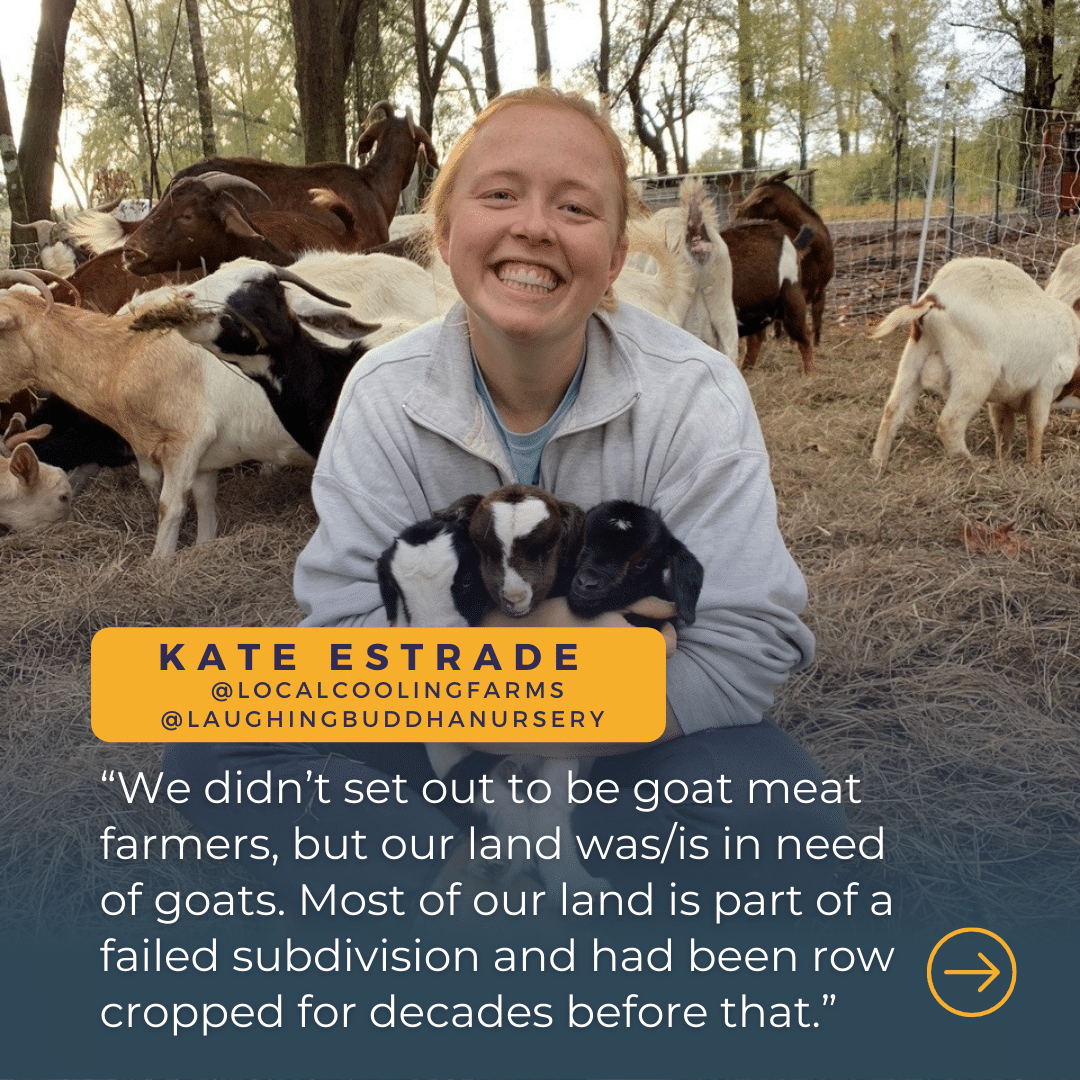
Share some background on your farm/business and work with goats:
My husband Grant and I started a regenerative, pasture-based farm in 2015. Because grazing animals (especially ruminants like cattle and goats) on pasture and silvopasture can actually sequester carbon back into the soil, our name, Local Cooling Farms, reflects our mission to practice regenerative agriculture methods that reverse global warming and climate change rather than contribute to it.
We raise egg layers, farrow-to-finish pigs, finish a small group of Pineywoods steers each year for beef and keep a breeding herd of meat goats. We also have a soil and composting business on the farm where we take in bulk coffee grounds for composting and vermicomposting and sell a variety of soil blends and amendments (like composted chicken litter from our chicks and pullets before they move out to pasture).
We didn’t set out to be goat meat farmers, but our land was/is in need of goats. Most of our land is part of a failed subdivision and had been row cropped for decades before that. The “pasture” had rock hard clay pan soil, stripped of nutrients from years of conventional monocultures. The plant growth per square foot was astonishingly low and the ecosystem was not thriving — we hardly even heard or saw field crickets in the early years, not to mention birds, frogs, snakes, turtles, etc.
The wooded part of our original acreage (we’ve since bought adjacent property as well) was also in bad shape. It was dark, overgrown with invasive species like Chinese privet, full of swarms of mosquitoes and beautiful oak trees were at risk of being crowded out by weak, diseased and generally less desirable trees.
Our herd of goats helped with both the “pasture” and the woods — rotating through the fields that were thick with blackberry vines, goldenrod, wild asters and lots of saplings and helping us clear shrubs and trees in the woods to turn the land into viable silvopasture.
Today we’re able to finish beef on our pastures because of the groundwork the goats laid (the chickens and pigs helped, too!).
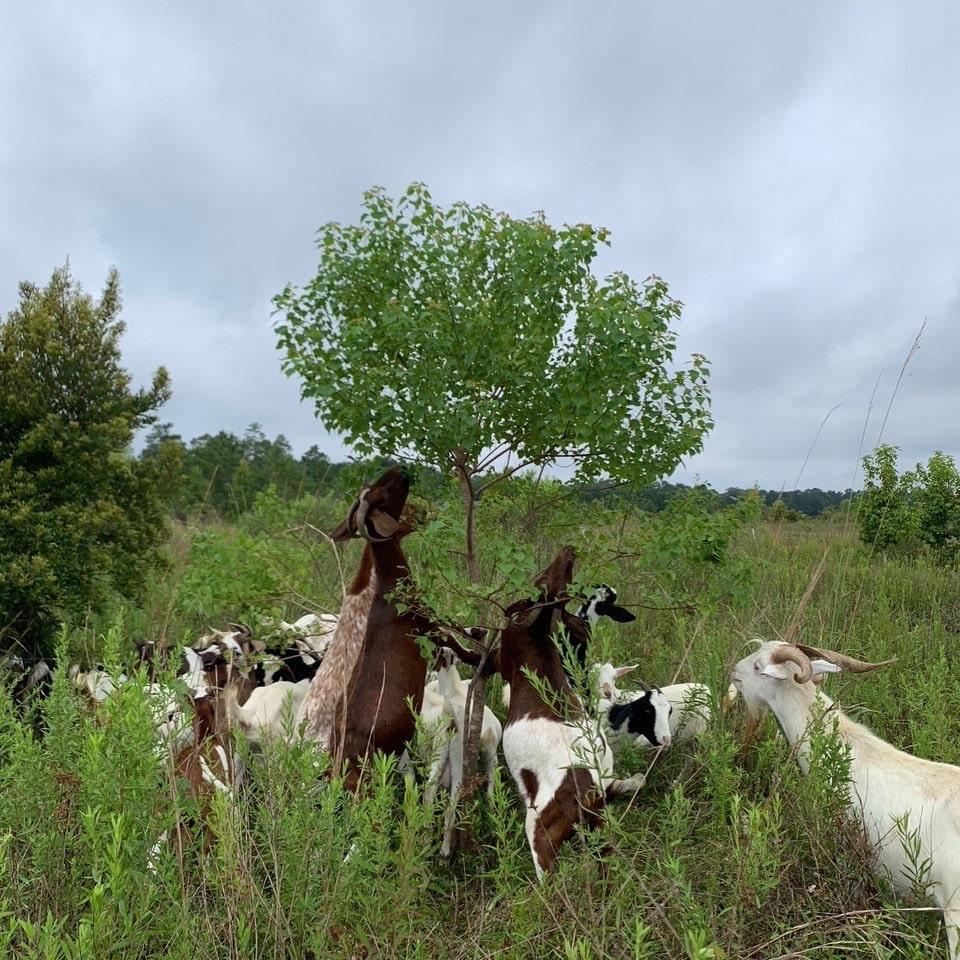
What’s your market?
Currently we sell all of our meat and a portion of our eggs through our garden store turned farm store/local grocery in metro New Orleans, Laughing Buddha Nursery. We have built up a local customer base through social media and email marketing to shop at our brick-and-mortar store and to pre order from neighborhood delivery hubs or drop points around the city.
We do post Craigslist ads for goat meat which sometimes attracts people specifically seeking it out, but generally we find it’s our existing customer base that is interested to try goat meat or try to prepare similarly to a restaurant where they’ve eaten it.
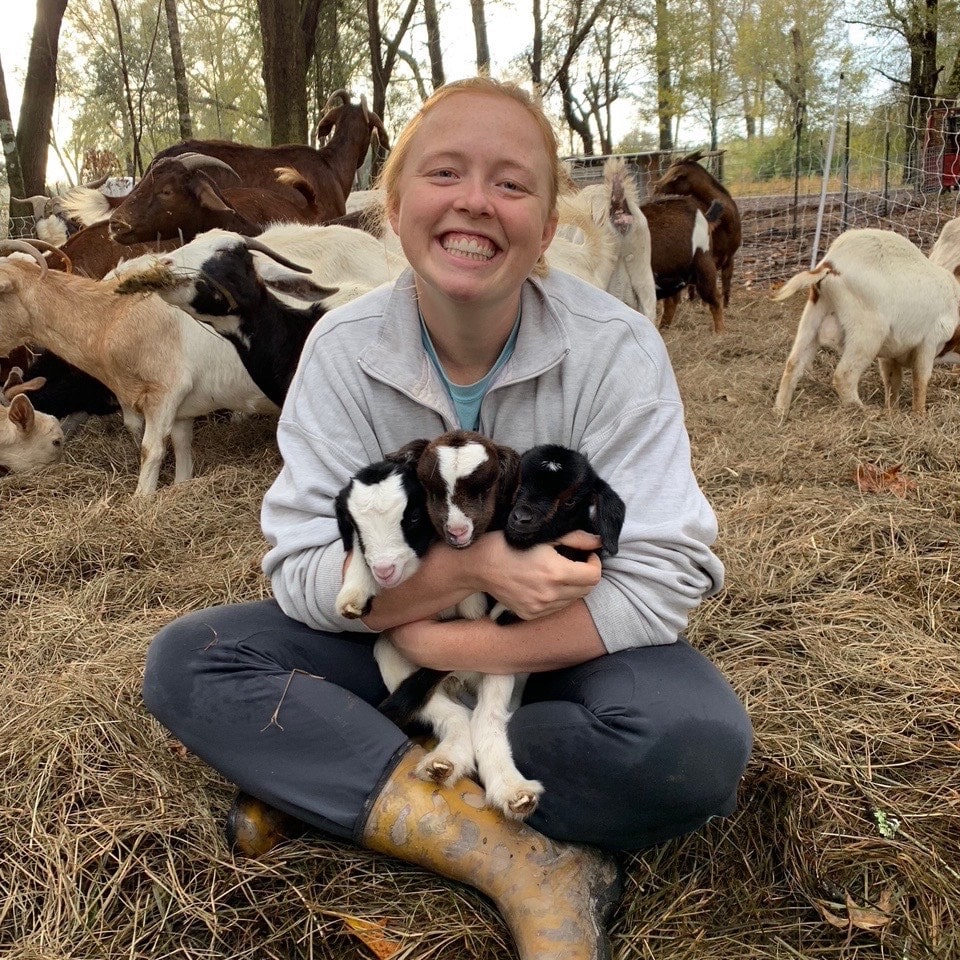
How/why did you get into doing this work?
Grant and I both care a lot about the quality of food we put in our bodies and the environment and climate change. Growing healthy protein in a way that builds soil, reverses ecosystem destruction, sequesters carbon, gives livestock a humane and dignified species-appropriate life and connects our community members to their food and agriculture is honestly a dream come true. It has of course required a lot of sacrifices and it’s very difficult sometimes, but I honestly can’t imagine doing anything else.
As for how we got into it, Grant started the garden shop in 2002. We met at the shop (I bought worms for my apartment compost bin!) in 2010. At that point I was working in nonprofit fundraising and not long after we met he started a composting division of a large sand and aggregate company. It was successful and in addition to our suburban house, we bought land as a someday/maybe homestead, weekend property or something like that in 2014. At that point we did not envision becoming full time farmers.
Then in 2016 he sold the shares of the composting company and added a small flock of chickens and American Guinea Hogs. Then we realized we needed some goats for clearing. Basically one thing lead to another and we realized we both wanted to farm. I quit my job in August of 2016 and we haven’t looked back.
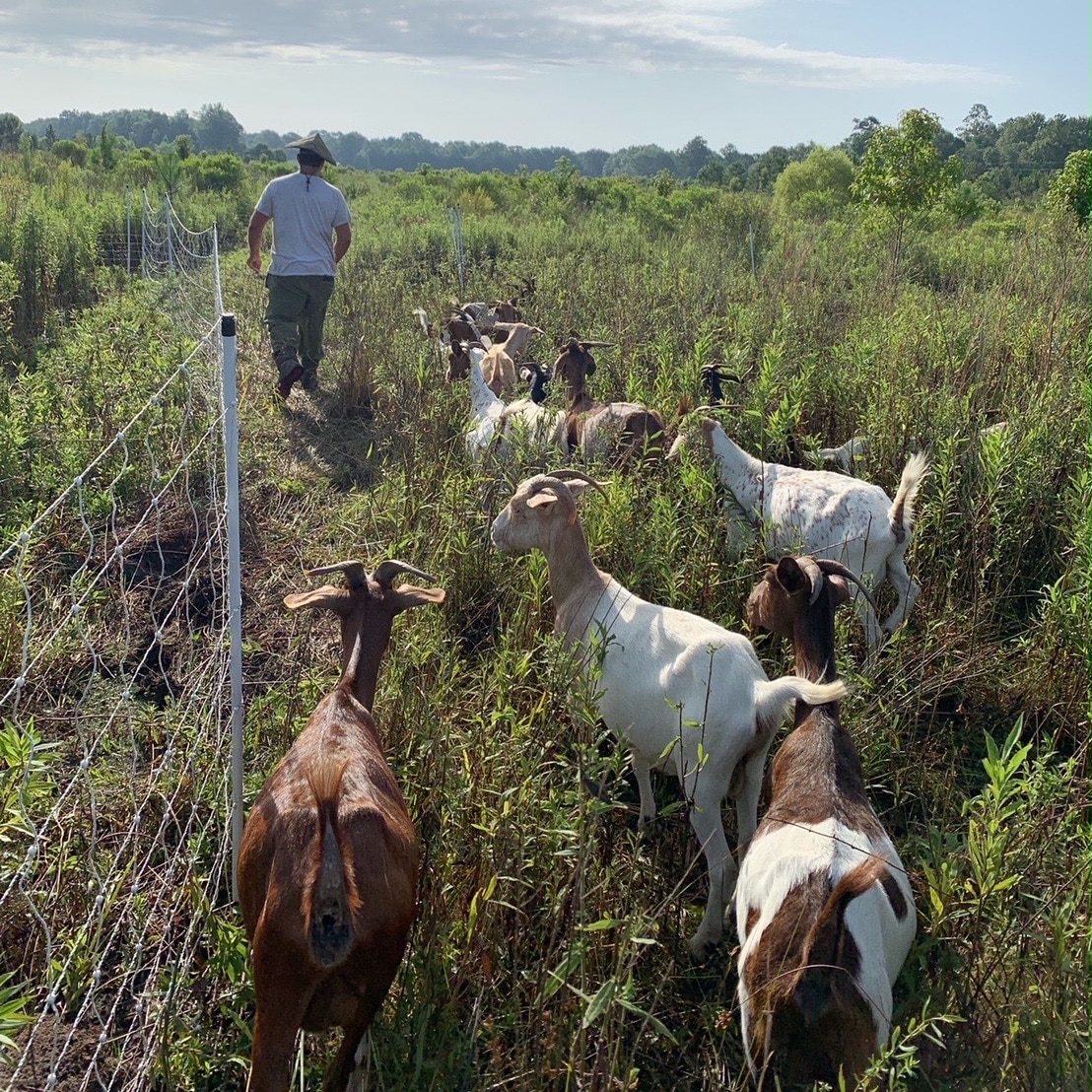
Why do you like working with goats?
Sometimes it’s so satisfying, sometimes maddening! Grant especially has a love-hate relationship with the goats.
Ok for real: they are incredibly smart and wily and therefore we only use electric net fencing and haven’t been able to train them to something less cumbersome to set up, like several single strands with step in posts.
We learned early on to have double the fencing we needed for a given rotation so that we could set up their next area right after they got moved into the new area — so they are happily eating new forage and not screaming at us as we set up the fence. A key of having them respect the fence is to stay ahead of their hunger and boredom. They can get through any fence if they’re motivated enough to!
The satisfaction is in the amount and types of plants they eat that other species don’t. Sometimes using goats to clear overgrown land is like bush hogging with machinery except that their hooves aren’t going to kill or disturb quail and other wildlife that nest in the ground as machinery does.
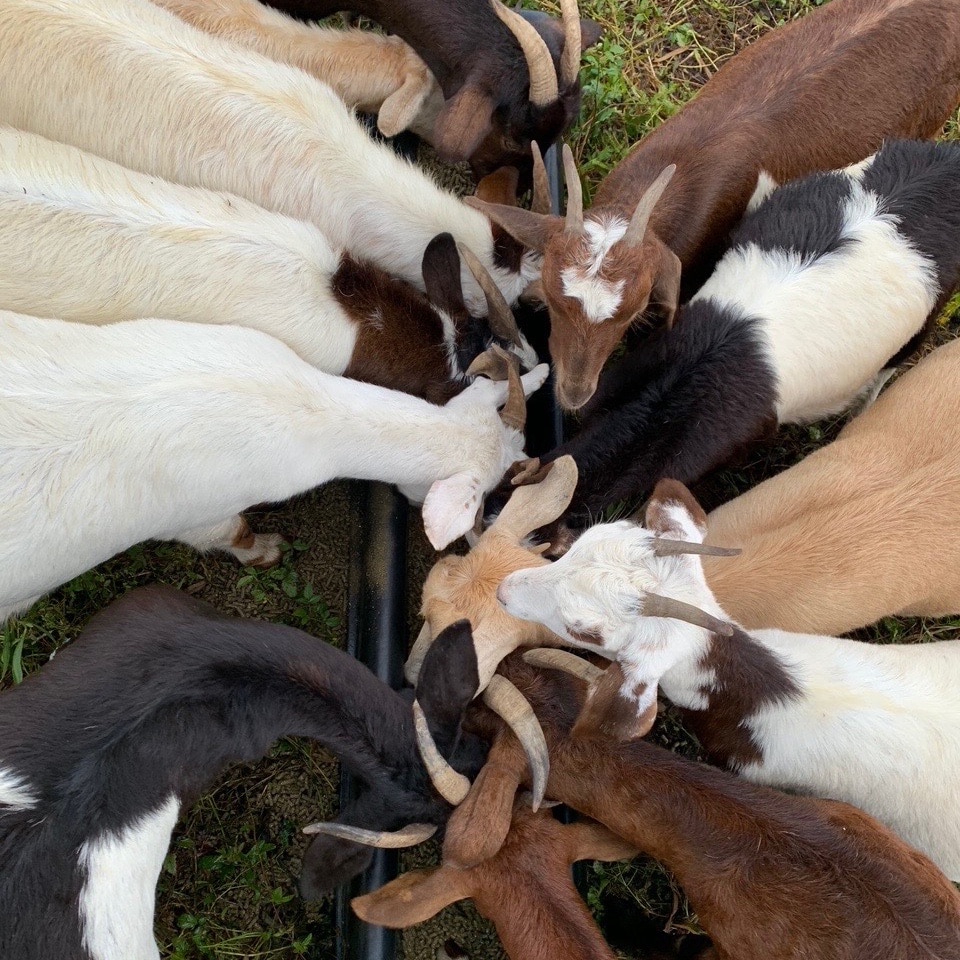
What’s one tip, trick, hack or favorite tool that you use with your goats?
For us, our breakthrough has been supplemental feeding the goats with an alfalfa, sunflower, molasses and mineral pellet. We had to let go of our diehard view that ruminants should only graze and eat hay because of our climate/specific context.
Our average rainfall is 65 inches per year, the highest in the continental United States. This year we’ve already gotten nearly 90 inches as of October 1. In addition to the parasite management issues that presents, our forage quality is lower than areas with less rainfall. The soil gets flushed out in a way. We also don’t have much of any rock to remineralize the soil.
So we still rotationally graze the goats and move them nearly every day to new pasture, but we provide the feed also (just about 1 lb. per goat per day, so not a huge amount.) Since we started year-round supplementing, they’re healthier, calmer, easier to manage and their fertility has increased significantly. Our rate of twins and triplets went up and many kidded twice a year instead of once.
We also look at the supplementation as sort of returning what was for so long reaped and hauled off from our land — it allows us to keep more animals on less land a little longer, accelerating the soil fertility with their pruning, hoof activity and manure.
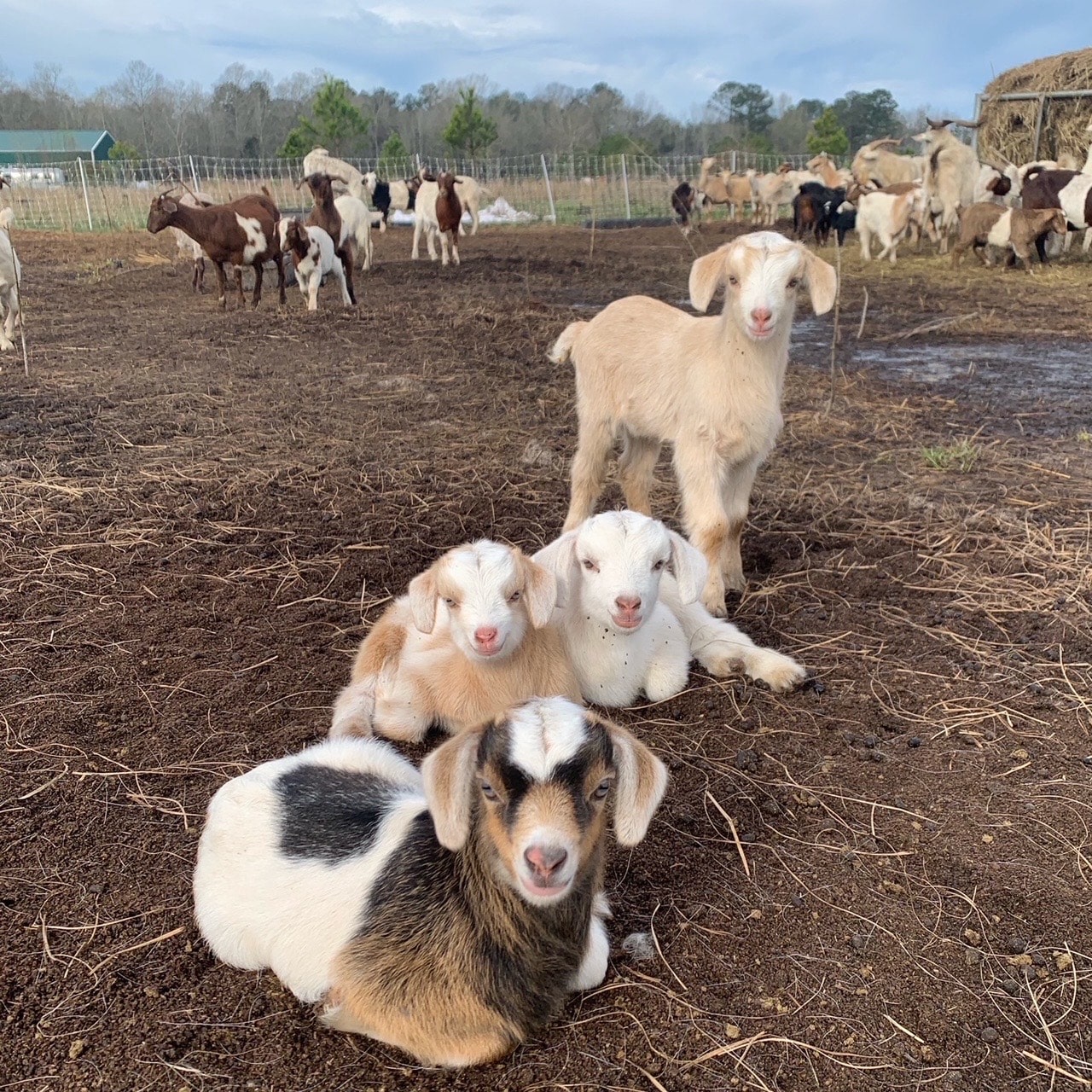
Where can people find you online?
We have one website for the farm and the shop, www.laughingbuddhanursery.com and there’s a farm section on it. Social media is @localcoolingfarms and @laughingbuddhanursery on Instagram and Facebook.
Local Cooling Farms on social media ⬇️
Laughing Buddha Nursery online ⬇️
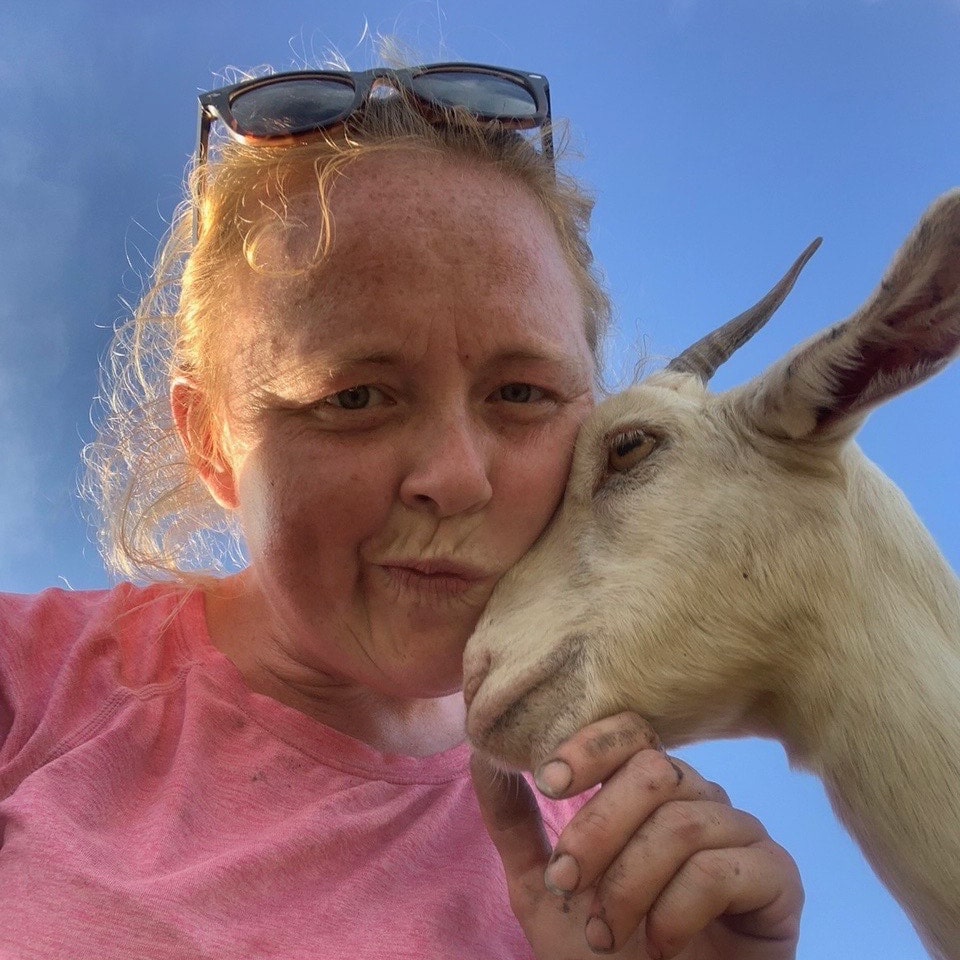
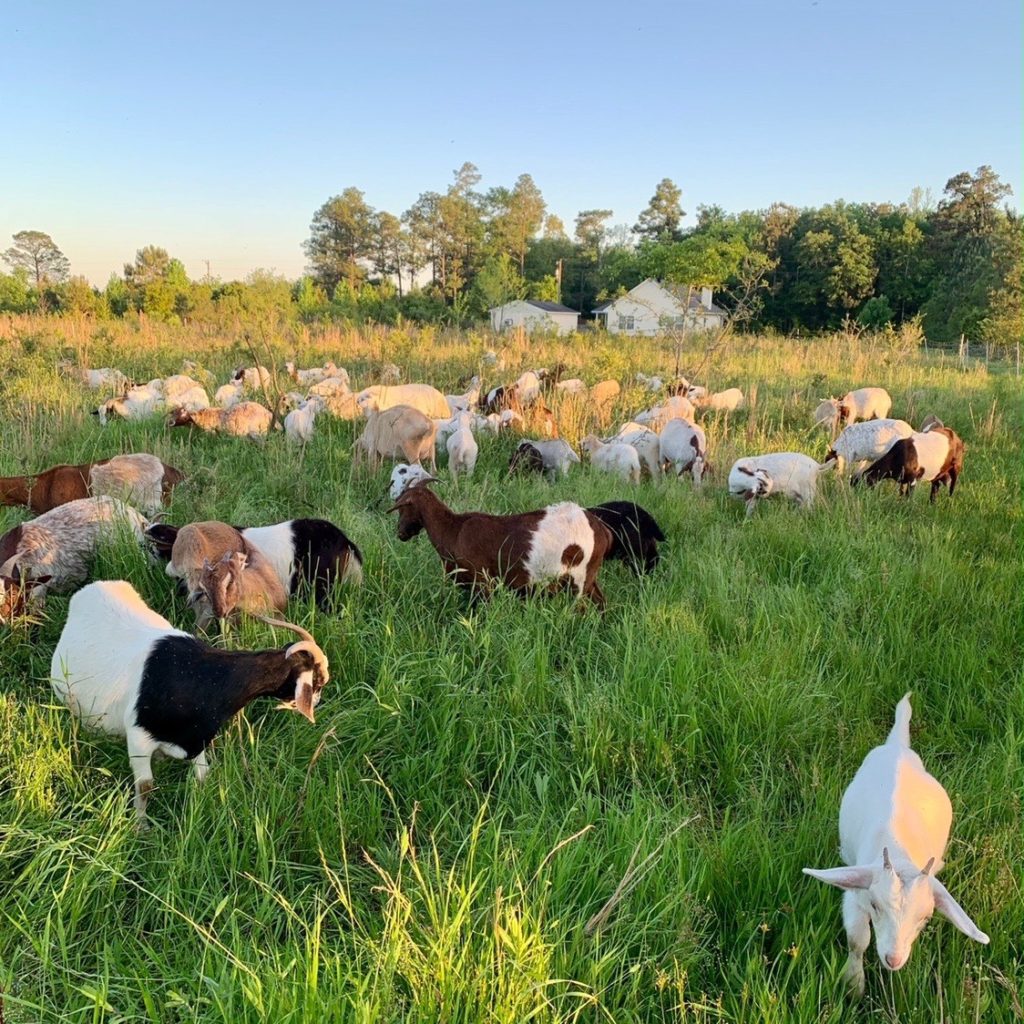
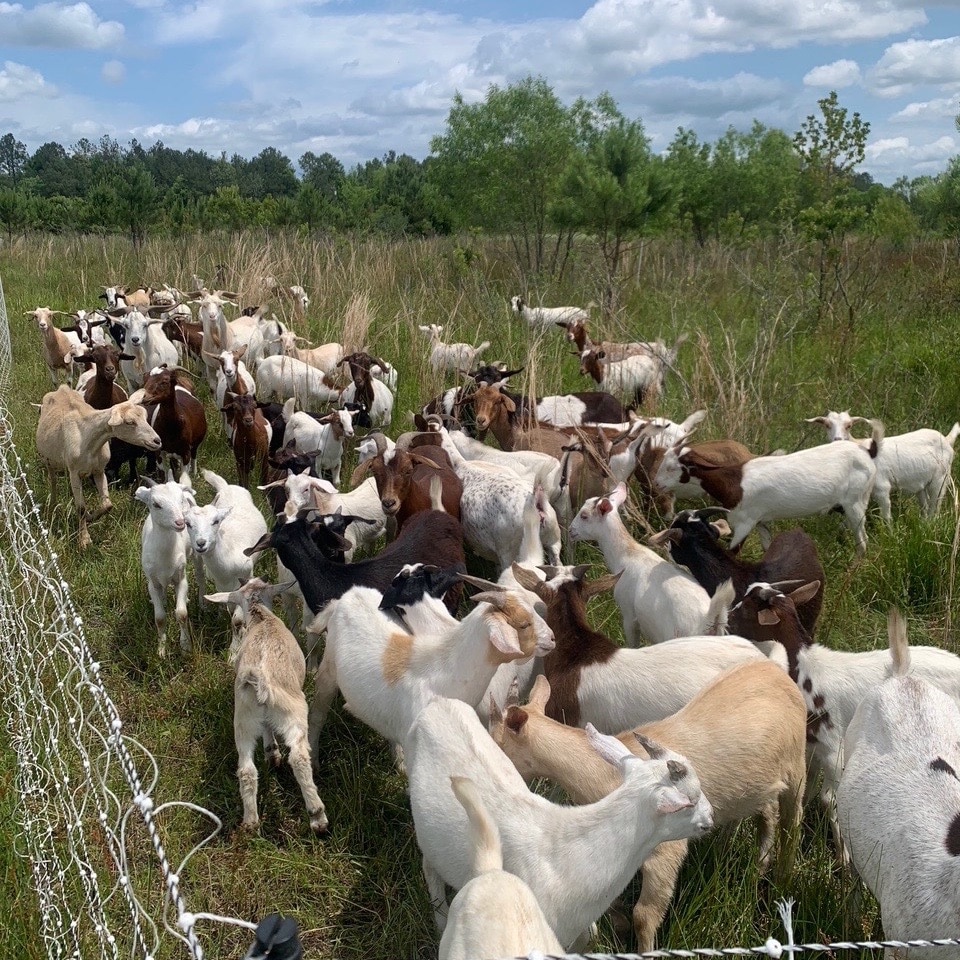
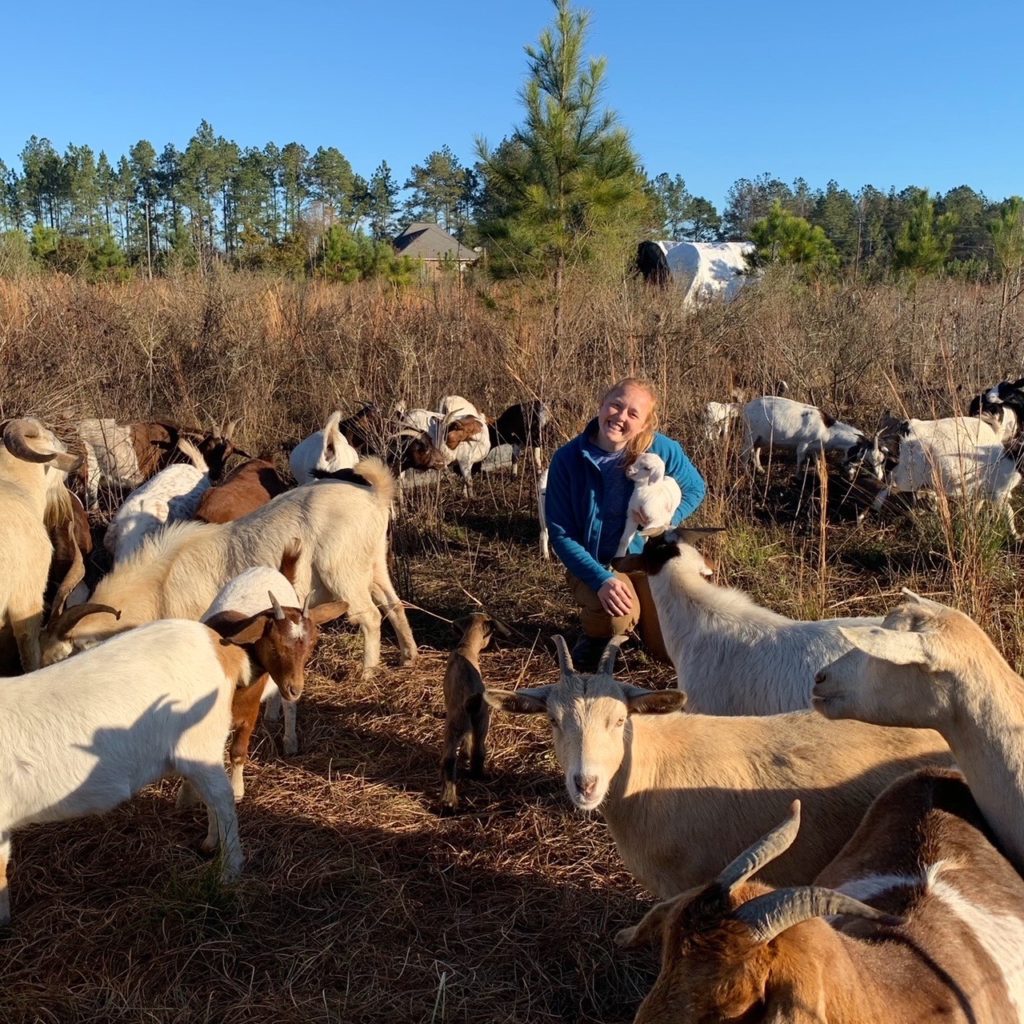
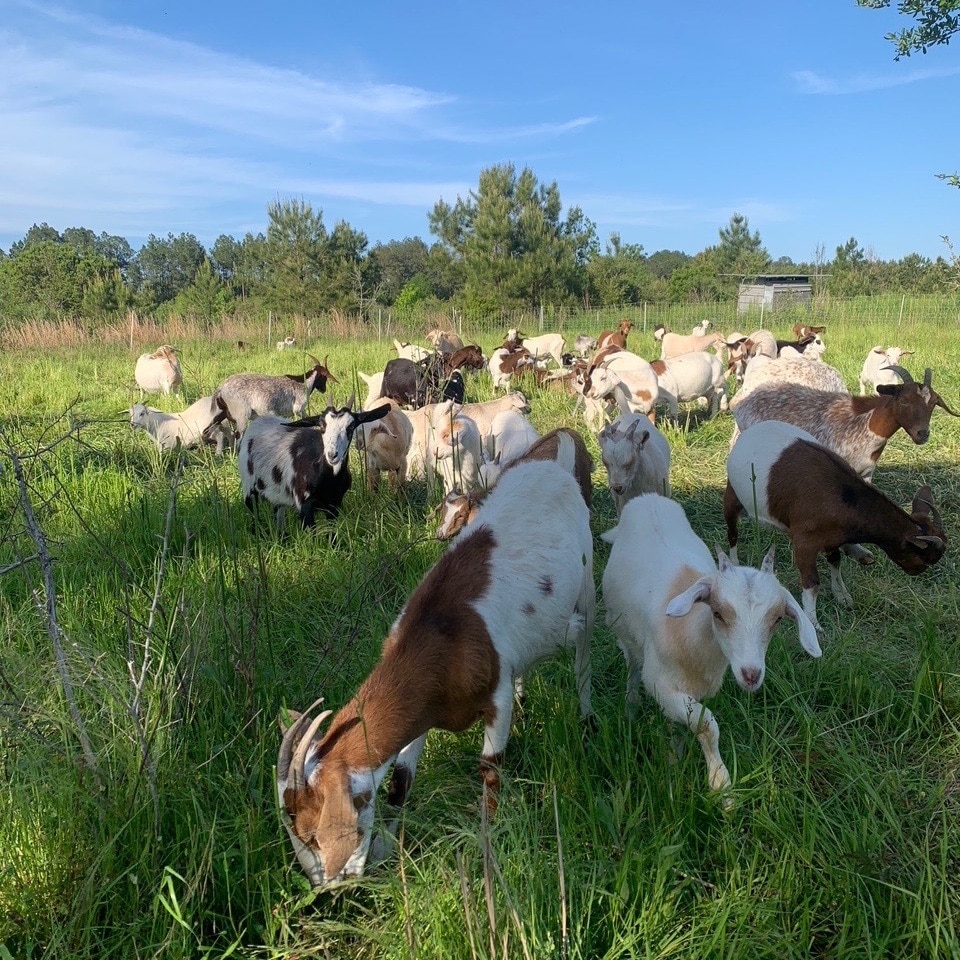
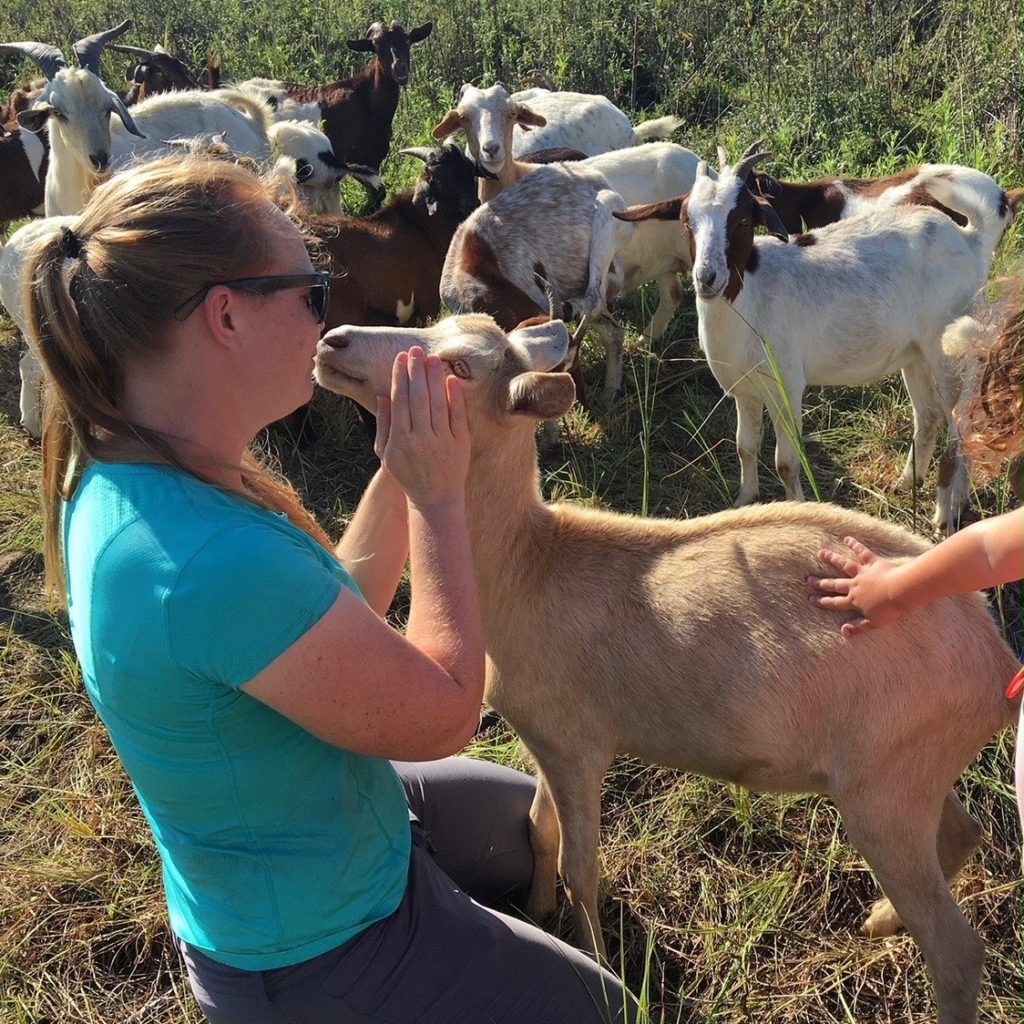

LEAVE A COMMENT
Comments